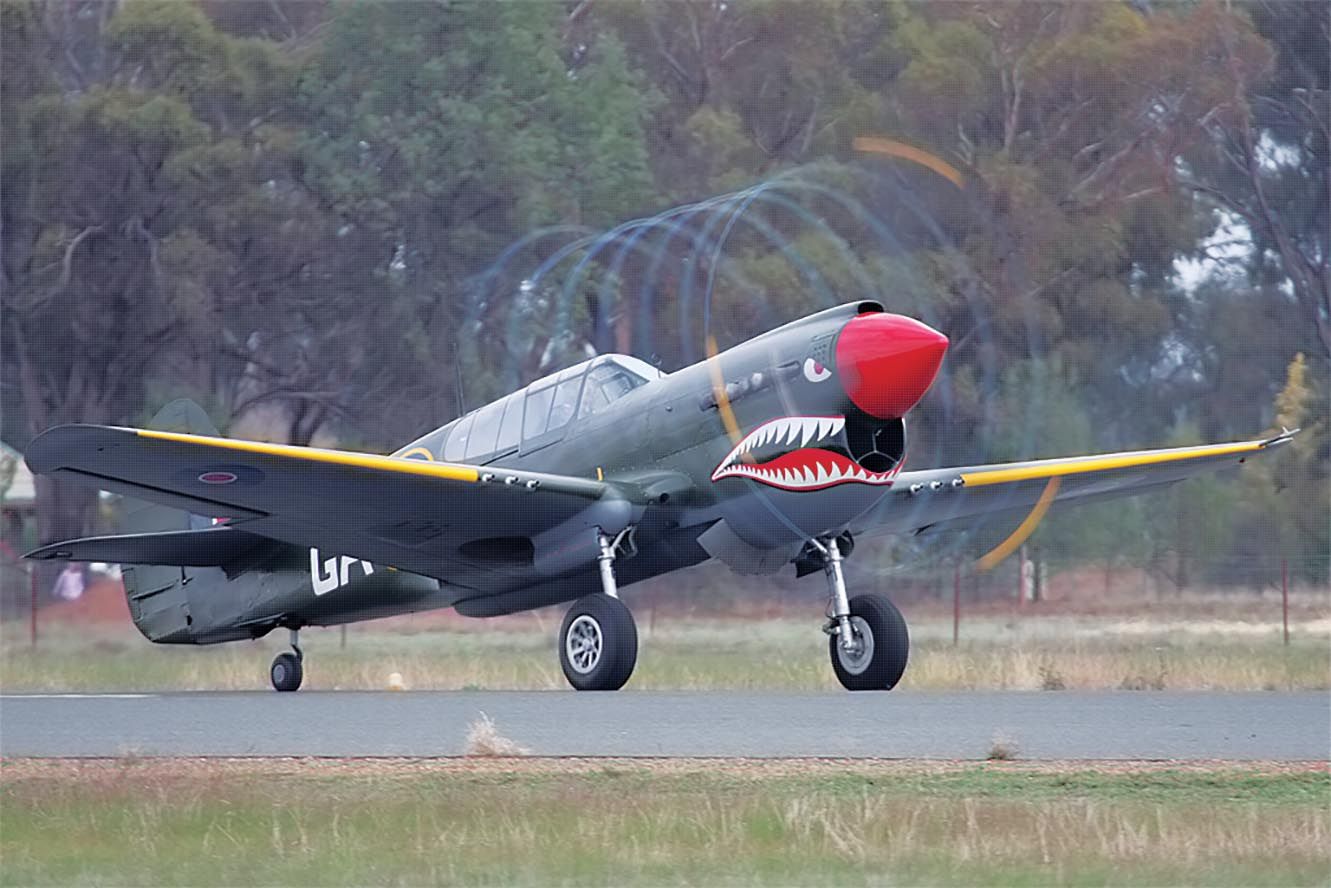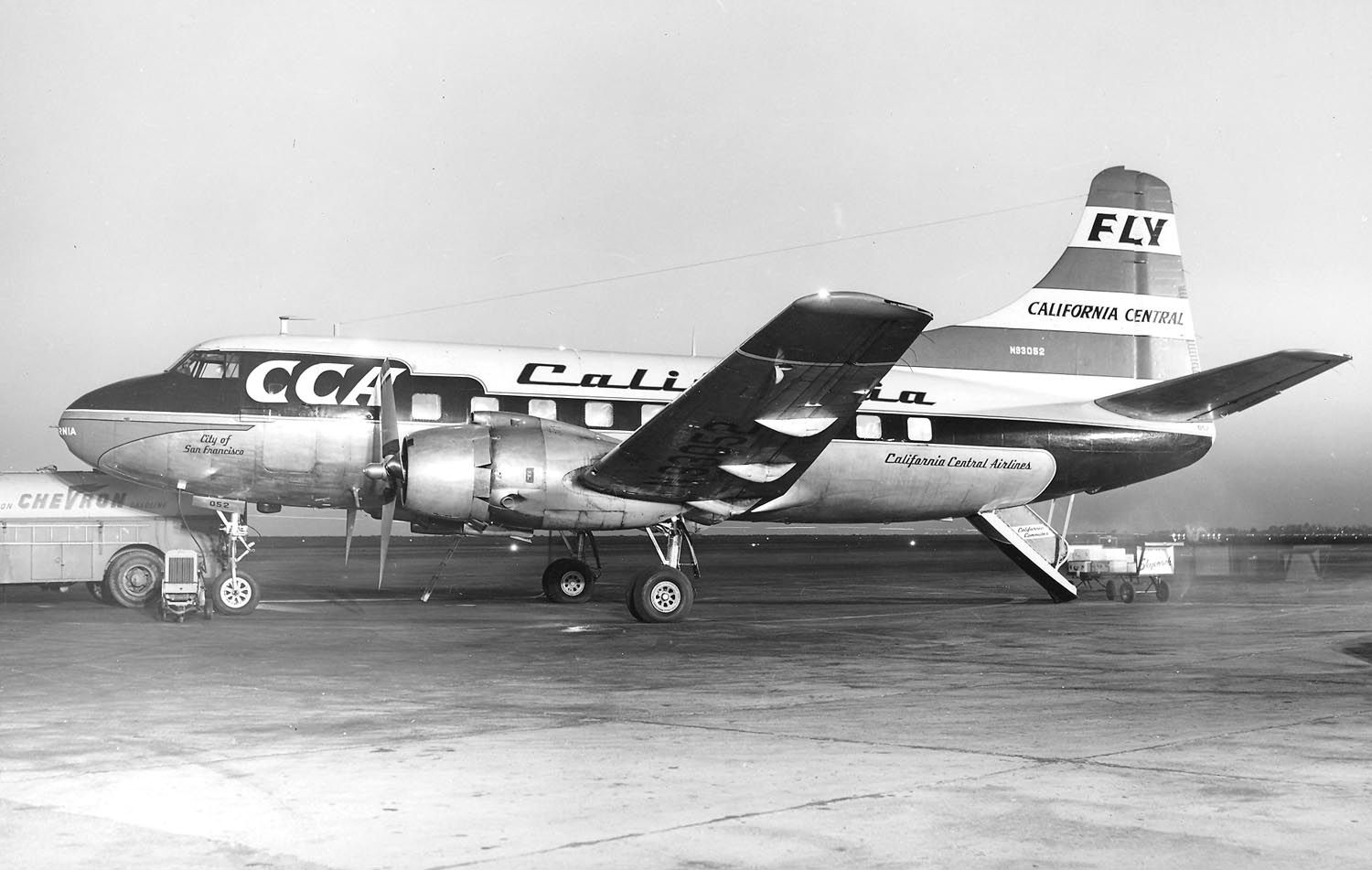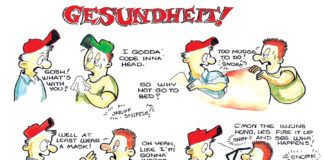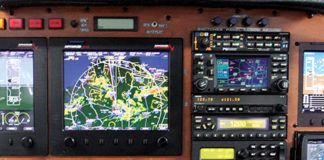
The propeller slipstream affects the aerodynamics of the airplane. A propeller accelerates air backward and also imparts a swirl. The air in the slipstream spirals aft, rotating in the same direction as the rotation of the propeller. Both the higher airspeed in the slipstream and the swirl affect the forces on the portions of the airframe that are immersed in the slipstream.
P-Factor
On a single-engine airplane with a tractor propeller, the fuselage and tail are fully immersed in the propeller slipstream. This means that on an airplane with a conventional (by American standards) propeller rotation (right blade moving down, left blade moving up), the air in the slipstream is moving left to right on top of the fuselage and right to left on the bottom of the fuselage.
The vertical fin is on top of the fuselage, so it is immersed in the left-to-right flowing portion of the slipstream. The sidewash from the cross flow of the slipstream induces an angle of attack on the vertical tail that causes it to develop lift (side force) to the right. This side force causes a nose-left yawing moment. This phenomenon is called P-factor.
The intensity of the P-factor is a function of airspeed and power setting. At high power and low airspeed, as is typical of climb, the P-factor is most powerful because the magnitude of the swirl in the slipstream is greater relative to the airspeed of the airplane. This maximizes the sidewash angle on the fin, and thus its angle of attack and lift coefficient. The effect is increased by the fact that the slipstream velocity is at its highest relative to the airspeed of the airplane so that the side force on the fin is at its maximum relative to the other forces on the airplane.
At higher airspeed and lower power, as is typical of cruise, P-factor is significantly lower than in climb. Power off, like in glide or approach, P-factor is negligible. The variation of P-factor with flight condition means that the rudder deflection needed to keep sideslip at zero and maintain coordinated flight varies with airspeed and power setting.
It is possible to set up the airplane to maintain coordinated flight with zero rudder pedal input and force at a single flight condition by using either a fixed rudder trim tab or by mounting the fin at a slight yaw angle to counteract the P-factor. At every other flight condition, the pilot must deflect the rudder with pressure on the rudder pedals to keep the ball centered unless the airplane has a rudder trim system the pilot can adjust in flight.
Absent adjustable rudder trim, the designer must choose what flight condition to set up the airplane for zero rudder force to trim. In most cases this will be cruise since the airplane will be cruising most of the time, and the pilot should not have to hold any continuous control pressure to maintain coordinated cruising flight.
Most airplanes need right rudder deflection and pressure on the right rudder pedal to keep the ball centered in climb because the P-factor is greater at high power and low airspeed. If the airplane is set up for zero rudder pressure coordinated cruise flight, it will need more rudder deflection to keep the ball centered in climb.

AoA Differential
The spiraling slipstream behind a propeller produces an upwash behind the ascending blade and a downwash behind the descending blade. If there is a wing behind the prop, this effect increases wing AoA behind the ascending blade and decreases it behind the descending blade. At angles of attack below the stall, this increases lift on one side of the prop and decreases it on the other. This lift differential causes a rolling moment that can help counteract the torque of the engine.
At higher angles of attack, the asymmetry in local AoA caused by the slipstream swirl can cause an asymmetric stall where the wing downstream of the upgoing blade stalls before the wing downstream of the descending blade. On a single-engine airplane this asymmetric stall will happen near the wing root and will likely be relatively benign as long as the outer portions of the wing do not stall first.
On a twin with wing-mounted engines the effect can be more dramatic. More of the wing is immersed in prop wash because there are two engines, and the slipstreams of the propellers are farther outboard than on a single. If both engines rotate in the same direction, there will be a significant prop-wash-induced difference in the angles of attack of the outer panels of the two wings. The farther outboard the AoA difference is, the more likely it is to induce an asymmetric stall that leads to a roll-off into an incipient spin.
Slipstream Convection
If an airplane yaws relative to the oncoming airflow, the slipstream convects downstream and is turned by the oncoming flow. This moves the slipstream laterally on the airframe. On a single-engine airplane the slipstream will move toward the retreating wing, increasing the lift of the retreating wing, and off of the advancing wing, decreasing the lift of the advancing wing.
On a twin, the slipstream will move outboard on the retreating wing and inboard on the advancing wing.
On a single, the movement of the slipstream increases the lift of the retreating wing and reduces the lift of the advancing wing. On a twin, the movement of the slipstreams shifts the lift of the retreating wing outboard and the lift of the advancing wing inboard. Both effects will cause a rolling moment toward the advancing wing, rolling the advancing wing down. This is an unstable variation of rolling moment with sideslip. If this unstable moment is not compensated for by a stable moment generated by the rest of the configuration, the airplane will have an unacceptable unstable dihedral effect.
The effect of slipstream convection is greater on a twin than on a single because more of the wing is washed by slipstream. Also, on a single, the fuselage acts as a fence that impedes turning of the slipstream, while on a twin the slipstream is freer to move laterally with sideslip of the airplane.
This phenomenon caused a serious issue with the last series of civilian transports built by the Glen L. Martin company. The Martin 2-0-2 was a twin-engine transport designed to be a replacement for the war-surplus DC-3s (C-47s) in widespread use at the time. In flight test, the 2-0-2 proved to be laterally unstable at high power and low airspeed, particularly with the flaps down. This presented the Martin designers with a serious problem. The cure for lateral instability is to increase wing dihedral. Since the problem was discovered in flight test, after the tooling to produce the wing carry-through structure was already complete, there was no economically viable way to increase the dihedral of the whole wing.
Martin’s solution was to introduce a dihedral break in the wing where the outer panels attached to the engine nacelles. This cured the lateral stability problem, but the hastily engineered wing attach system had structural issues that led to a 2-0-2 shedding a wing in flight. The airplane was fixed and improved and reintroduced as the Martin 4-0-4. The 4-0-4 was modestly successful, but is notable primarily as the last civilian airplane built by Martin.














I’d be interested to know more about centrifugal forces and how this adds to P factor, especially in a taildragger .
Your explanation of “P-factor” is an excellent description of spiraling slipstream. P-factor is a completely different phenomenon caused by the asymmetrical thrust on a propeller during climbing flight.
What if the engine were angled to compensate instead of the rudder? I’ve noticed that generally model aircraft angle their engines down and to the side to reduce the p factor, and require very little control input to compensate, but to my knowledge no full size airplanes use that method. Why doesn’t anyone try that?
I’m guessing that efficiency would decrease incredibly if the engine was mounted at an angle. Any change to the prop length or pitch, and your angled engine is no longer angled at the right direction.
Model planes usually have a much higher power to weight ratio, so the difference between climb and cruise might require greater measures and efficiency isn’t as big of a factor with lower running costs.
a friend of mine successfully uses engine deflection on his homemade airplane. he is happy with the result. subaru 204 engine.